Structure and features of diaphragm valves
Basic structure and mechanism of diaphragm valves
Diaphragm valves are generally refer to valves with a structure that opens and closes the flow path with a flexible diaphragm such as rubber.
As shown in the figure below, the basic structure of the valve consists of three units: the actuator, the diaphragm, and the body. The fluid is controlled by pressing or separating the diaphragm against the seal on the inner surface of the body.
Valve types are divided into two types: Weir types (400 type) and Straight types (500 type). The basic structures are the same.
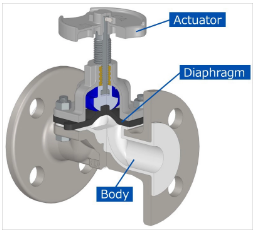 |  | 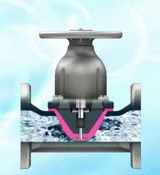 |
| Weir type (400 type) | Straight type (500 type) |
Features of diaphragm valves
①Excellent airtightness
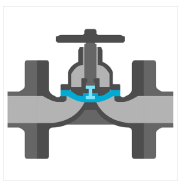
Because the actuator is completely isolated from the flow path by the diaphragm, there is no leakage to the outside or contamination of the fluid from the outside air.
Our diaphragms are subjected to various tests under severe conditions to confirm their durability and safety. It has high sealing reliability against external leakage and/or valve seat leakage and has been highly evaluated by users in a wide range of industries for its stable quality and performance.
②Excellent cleanability
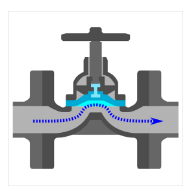
The fluid passage section is streamlined and has no pocket sections, which minimizes liquid pools and provides self-purification.
③Good maintainability
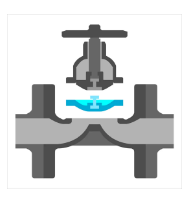
This is a simple structure of three parts: the actuator, the diaphragm, and the body. Easy to disassembly and assembly.
Due to top entry structure, the diaphragm can be replaced only by removing the bolts and nuts of the body with piping.
Due to interchangeability of each parts, it is also easy to change manual valve to be automated valve.
④Excellent corrosion and chemical resistance
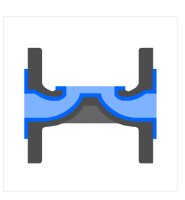
The simple body shape, suitable for lining processing.
The combination of various lining of bodies such as rubber and fluorocarbon resin and abundant diaphragm materials enables the valve to be manufactured to meet a wide range of fluid conditions. It also offers superior cost performance compared to special alloy-based materials.
⑤Environmentally friendly
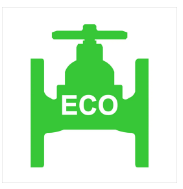
Since the structure is simple, the number of parts is less than that of other valve types, and there is no waste in consumables.
Striving to reduce environmental impact by using lead-free chloroprene diaphragms and environmentally friendly paints, and by improving durability and reducing air consumption of actuator.


